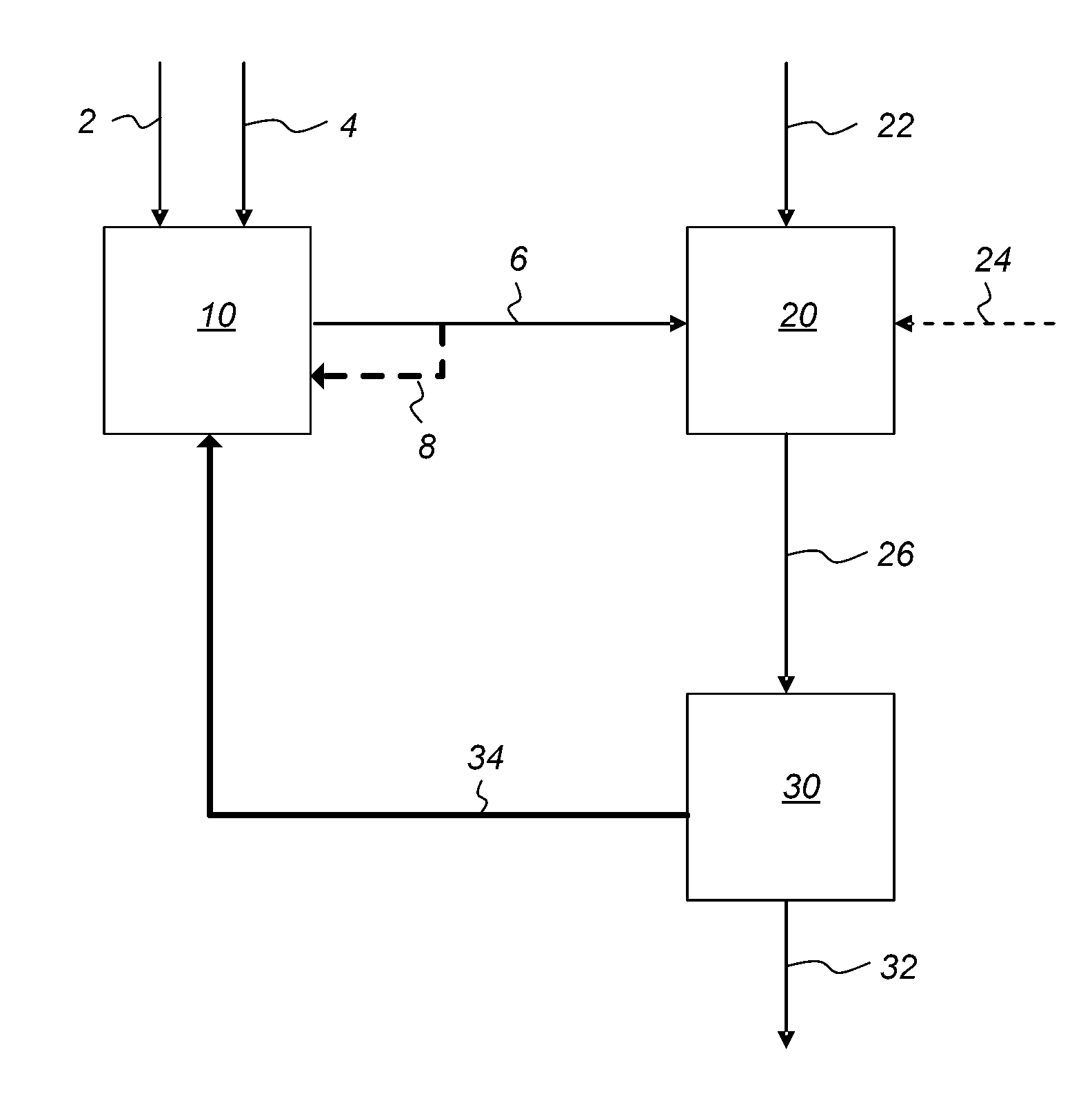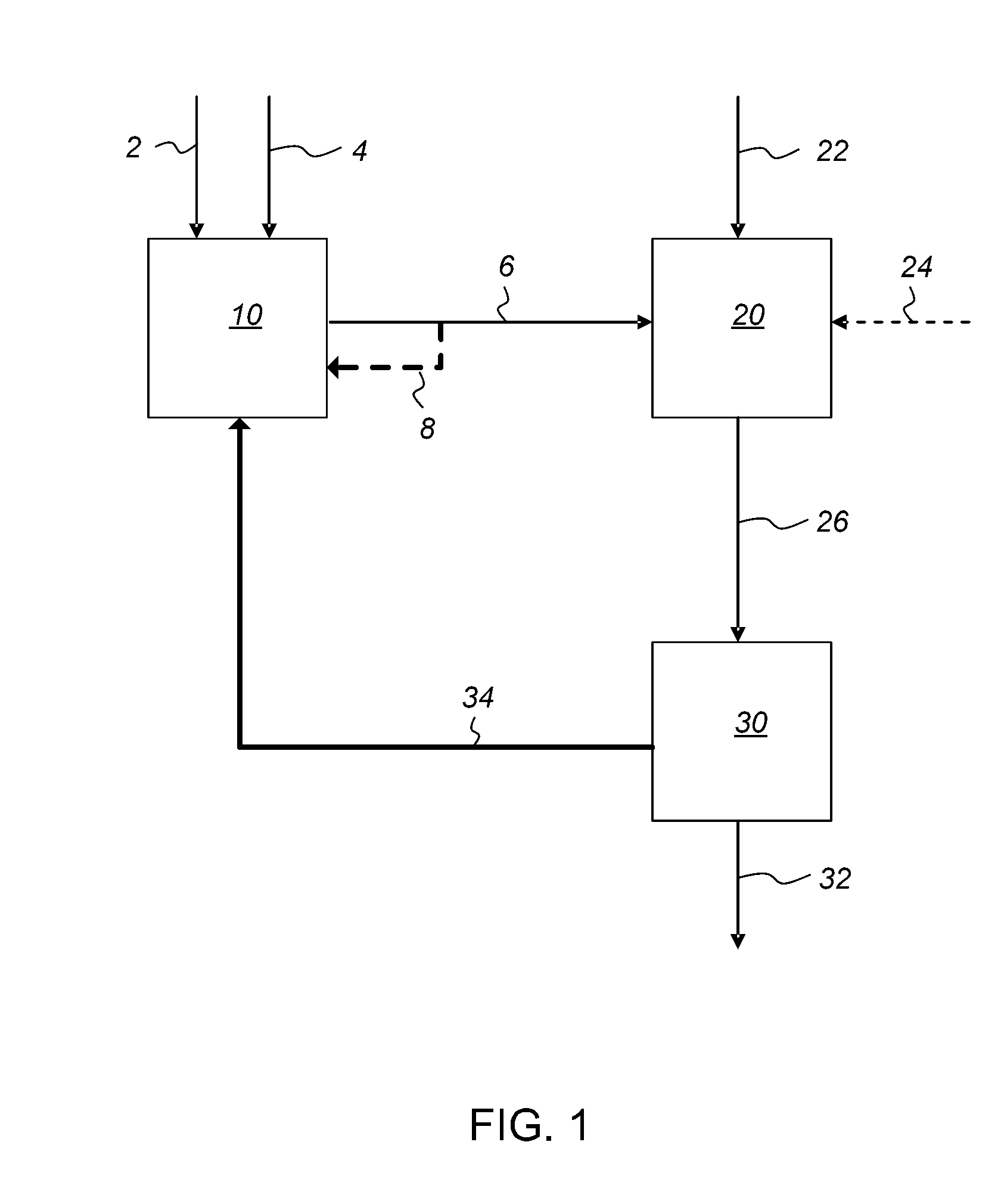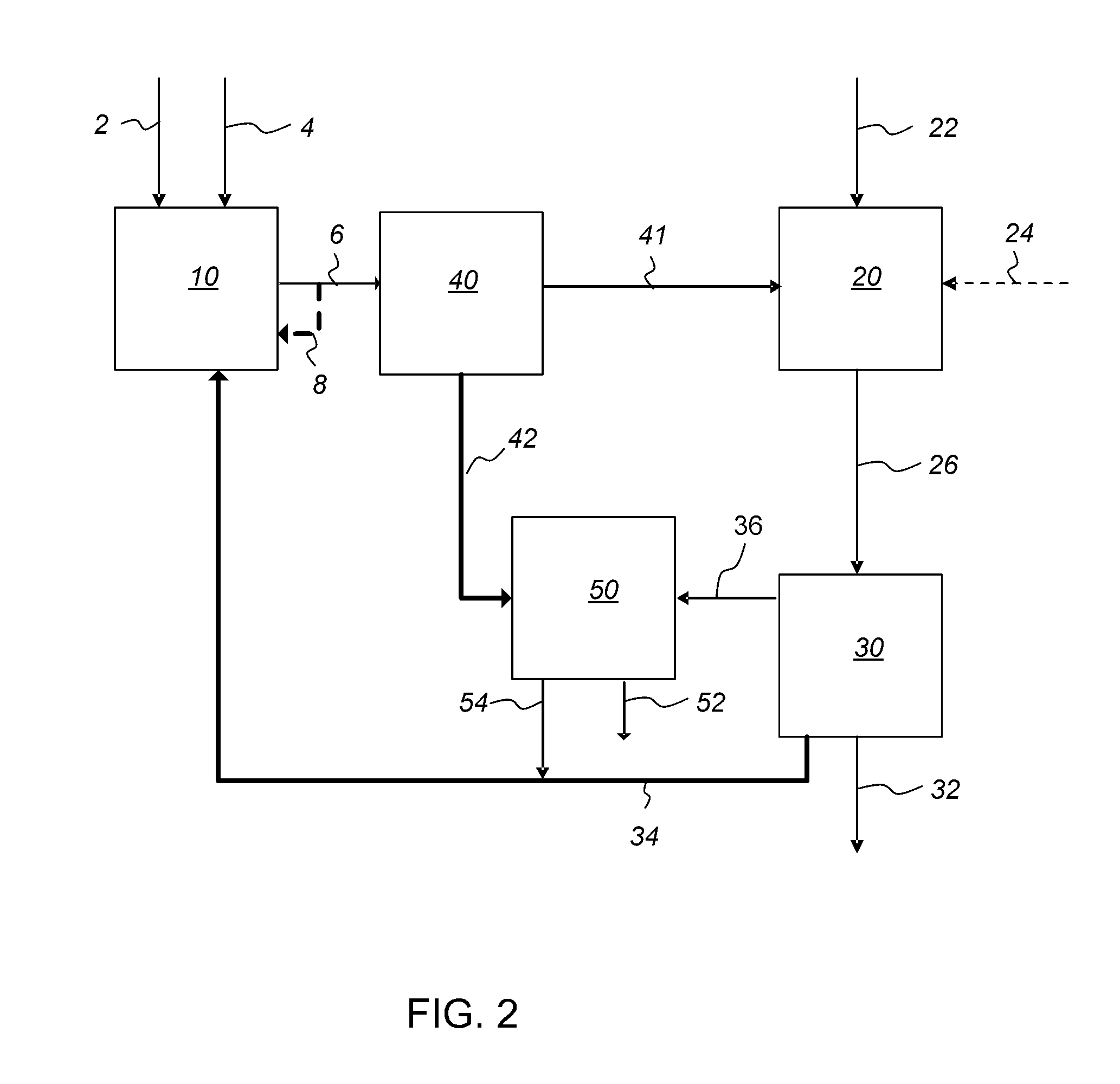Process for Producing Ethanol by Hydrocarbon Oxidation and Hydrogenation or Hydration
- Summary
- Abstract
- Description
- Claims
- Application Information
AI Technical Summary
Benefits of technology
Problems solved by technology
Method used
Image
Examples
Embodiment Construction
A. Introduction
[0017]In general, the process relates to producing ethanol from hydrocarbons, including ethane. In one embodiment, ethane may be oxidized to produce oxygenates that are further hydrogenated to ethanol. In another embodiment, ethane may be oxidized to produce oxygenates and ethylene that are further reacted, via hydrogenation or hydration, to ethanol. In still another embodiment, ethane may be oxidized to produce ethylene that is further hydrated to ethanol or converted to ethane that can be recycled to the oxidization reactor.
[0018]The oxygenates may comprise acetic acid, acetaldehyde, ethyl acetate, ethanol, and mixtures thereof. More preferably, the oxygenates may comprise at least acetic acid. The oxidation catalyst may produce a mixture of oxygenates or one species of the oxygenates, such as acetic acid.
[0019]In some embodiments, the oxidation catalysts may be more selective for producing ethylene or one of the oxygenate species, such as acetic acid or acetaldehyd...
PUM
| Property | Measurement | Unit |
|---|---|---|
| Substance count | aaaaa | aaaaa |
| Weight | aaaaa | aaaaa |
Abstract
Description
Claims
Application Information
 Login to View More
Login to View More - R&D
- Intellectual Property
- Life Sciences
- Materials
- Tech Scout
- Unparalleled Data Quality
- Higher Quality Content
- 60% Fewer Hallucinations
Browse by: Latest US Patents, China's latest patents, Technical Efficacy Thesaurus, Application Domain, Technology Topic, Popular Technical Reports.
© 2025 PatSnap. All rights reserved.Legal|Privacy policy|Modern Slavery Act Transparency Statement|Sitemap|About US| Contact US: help@patsnap.com



